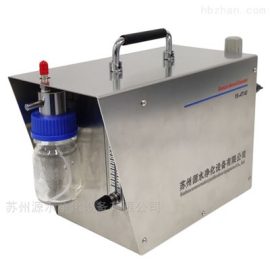Aerosol Generator: Principles and Applications in Modern Science

# Aerosol Generator: Principles and Applications in Modern Science
## Introduction to Aerosol Generators
An aerosol generator is a device designed to produce fine particles or droplets suspended in a gas, typically air. These devices are widely used in various scientific, industrial, and medical applications. The ability to generate aerosols with precise control over particle size and concentration makes them invaluable tools in modern research and technology.
## Principles of Operation
The fundamental principle behind an aerosol generator involves the conversion of a liquid or solid material into a fine mist or powder. This process can be achieved through several methods, including:
– Nebulization: This method uses ultrasonic vibrations or compressed air to break down a liquid into tiny droplets.
– Atomization: High-pressure nozzles or spinning disks are used to create fine droplets from a liquid.
– Electrospray: An electric field is applied to a liquid to produce charged droplets, which are then dispersed as an aerosol.
Each method has its own advantages and is chosen based on the specific requirements of the application, such as desired particle size, concentration, and the nature of the material being aerosolized.
## Applications in Modern Science
Aerosol generators play a crucial role in a wide range of scientific fields. Some of the key applications include:
### Environmental Science
In environmental science, aerosol generators are used to study atmospheric aerosols, which have significant impacts on climate, air quality, and human health. Researchers use these devices to simulate natural aerosols in controlled laboratory settings, allowing for detailed analysis of their properties and effects.
### Pharmaceutical Research
In the pharmaceutical industry, aerosol generators are essential for the development and testing of inhaled medications. They enable the production of aerosols with precise particle sizes, ensuring optimal delivery of drugs to the respiratory system. This is particularly important for treatments targeting conditions such as asthma, chronic obstructive pulmonary disease (COPD), and cystic fibrosis.
### Material Science
Aerosol generators are also used in material science to produce fine powders and coatings. For example, they are employed in the synthesis of nanoparticles, which have unique properties due to their small size. These nanoparticles are used in a variety of applications, including electronics, catalysis, and biomedical devices.
### Medical and Biological Research
In medical and biological research, aerosol generators are used to create aerosols for inhalation studies, allowing researchers to investigate the effects of various substances on the respiratory system. They are also used in the development of vaccines and other therapeutic agents that can be delivered via inhalation.
## Conclusion
Aerosol generators are versatile tools that have become indispensable in modern science. Their ability to produce finely controlled aerosols has opened up new possibilities in environmental science, pharmaceutical research, material science, and medical research. As technology continues to advance, the applications of aerosol generators are likely to expand even further, contributing to new discoveries and innovations across a wide range of fields.
Keyword: Aerosol Generator
